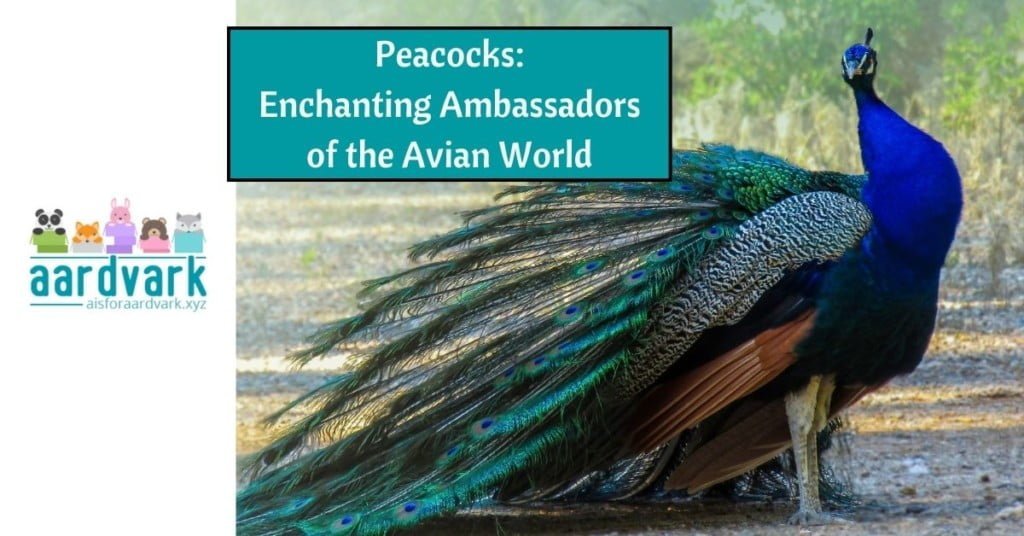The peacock, resplendent in its iridescent plumage, is a testament to nature’s artistic prowess. Part of the pheasant family, these birds are a visual spectacle known worldwide for their beauty.
Splendor in Feathers
These birds are known as “peafowl.” Peacocks are the males of the species. They stand out because their magnificent train of tail feathers displays a kaleidoscope of iridescent colors. These tail feathers can extend up to 150 centimeters (59 inches) in length. They include an eye-like pattern and are used in mating displays to captivate peahens.
Adult peafowl generally measure 90 to 130 centimeters (35 to 51 inches) in body length and weigh around 4 to 6 kilograms (8.8 to 13.2 pounds). Like most birds, males showcase more vibrant colors than the more subdued peahens.
Diverse Habitats and Global Presence
Peafowl are native to the lush forests and open lands of South Asia and parts of Africa. They’ve adapted to a range of environments, though. The Indian Peafowl is the most familiar bird in this family, predominantly found in the Indian subcontinent. On the other hand, the Green Peafowl inhabits regions of Southeast Asia.
Feeding Habits: An Omnivorous Diet
Peafowl have an omnivorous diet that includes a mix of seeds, insects, fruits, and sometimes small animals. They primarily forage on the ground in small groups and roost in trees at night.
Mating: A Spectacular Courtship
The peacock’s train is a vital tool in their courtship rituals. During mating season, they showcase their trains and engage in elaborate dances to attract peahens, creating a visual and auditory spectacle.
Nesting and Rearing: A Mother’s Care
Peahens lay a clutch of 4 to 8 eggs, incubating them for about 28 days in nests hidden among vegetation. The chicks are precocial, meaning they’re already advanced when they hatch and can even begin walking and looking for food. Peafowl chicks stay close to their mother while learning to forage.
Social Structure: From Solitary to Sociable
Peafowl exhibit varied social behaviors. Although they can be solitary, they often form small groups. Aggression among males is common during the breeding season, but they may live peacefully in mixed groups at other times.
Can Peafowl Fly?
Contrary to popular belief, peafowl can fly, albeit not very far or high. They use their flight mainly to escape predators and roost in trees, where they are safer from ground predators. Their flight is typically a short burst over a small distance to reach a perch or to avoid danger.
But that brings us to a common question: why do “free” peafowl not escape zoos, parks, or even extravagant resorts where they’re sometimes seen? This freedom is possible because peafowl are not naturally inclined to fly long distances. Additionally, zoos and other areas provide ample food, shelter, and safety, reducing the birds’ instinct to migrate or roam far. This arrangement allows visitors to experience these majestic birds up close, adding to the zoo’s allure and educational value.
Conservation: Preserving Nature’s Artistry
Peafowl are not critically endangered, but they do face threats from habitat destruction and hunting in certain regions. Conservation efforts are crucial for preserving these magnificent birds and their habitats for future generations.
Peafowl continue to captivate and educate with their glorious feathers and complex behaviors. Their conservation is intertwined with the health of our ecosystems, highlighting the importance of preserving natural habitats and biodiversity. These birds, with their ability to thrive in the wild and semi-captive environments like zoos, serve as a vibrant reminder of nature’s wonders and the need for ecological stewardship.



